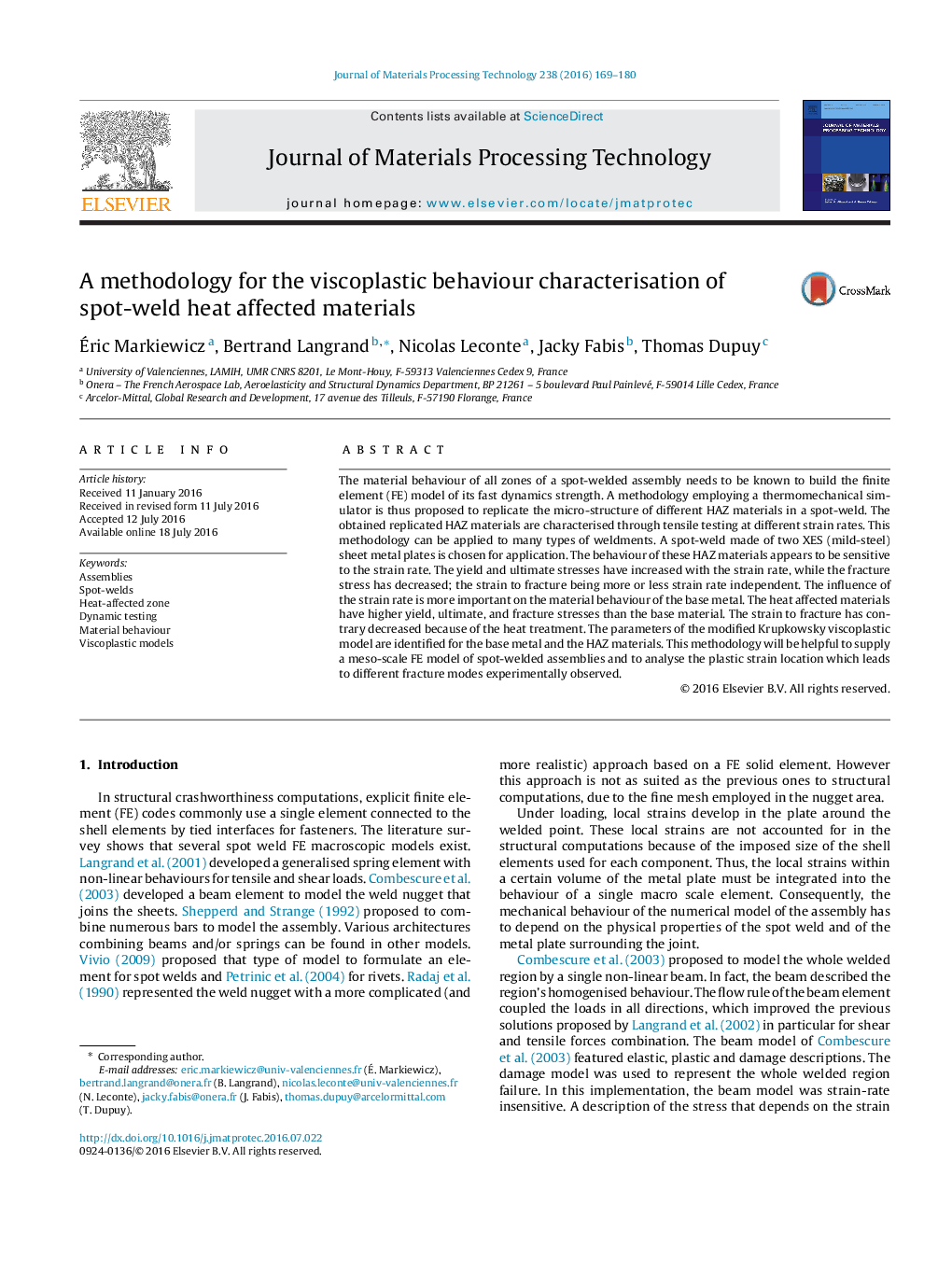| Article ID | Journal | Published Year | Pages | File Type |
|---|---|---|---|---|
| 7176648 | Journal of Materials Processing Technology | 2016 | 12 Pages |
Abstract
The material behaviour of all zones of a spot-welded assembly needs to be known to build the finite element (FE) model of its fast dynamics strength. A methodology employing a thermomechanical simulator is thus proposed to replicate the micro-structure of different HAZ materials in a spot-weld. The obtained replicated HAZ materials are characterised through tensile testing at different strain rates. This methodology can be applied to many types of weldments. A spot-weld made of two XES (mild-steel) sheet metal plates is chosen for application. The behaviour of these HAZ materials appears to be sensitive to the strain rate. The yield and ultimate stresses have increased with the strain rate, while the fracture stress has decreased; the strain to fracture being more or less strain rate independent. The influence of the strain rate is more important on the material behaviour of the base metal. The heat affected materials have higher yield, ultimate, and fracture stresses than the base material. The strain to fracture has contrary decreased because of the heat treatment. The parameters of the modified Krupkowsky viscoplastic model are identified for the base metal and the HAZ materials. This methodology will be helpful to supply a meso-scale FE model of spot-welded assemblies and to analyse the plastic strain location which leads to different fracture modes experimentally observed.
Related Topics
Physical Sciences and Engineering
Engineering
Industrial and Manufacturing Engineering
Authors
Ãric Markiewicz, Bertrand Langrand, Nicolas Leconte, Jacky Fabis, Thomas Dupuy,
